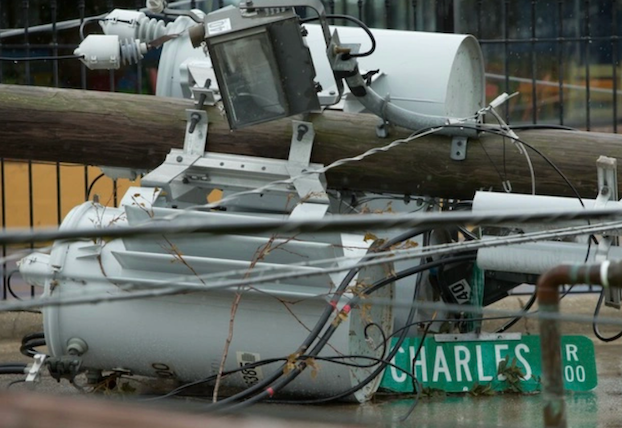Officials stress preparedness for upcoming hurricane season
Published 7:06 am Wednesday, May 4, 2022

- Downed power lines litter Lake Charles roadways following Hurricane Laura's arrival in Southwest Louisiana in August 2020. (Rick Hickman / Leesville Leader Archives)
By John Guidroz
During Hurricane Preparedness Week, local emergency preparedness officials and forecasters are stressing that residents keep their guard up for the approaching Atlantic hurricane season that lasts from June 1 through Nov. 30.
An April 7 forecast released by Colorado State University calls for 19 named storms and nine hurricanes, four of them major hurricanes, meaning Category 3 or higher. The average numbers from 1991-2000 show more than 14 named storms, just over seven hurricanes and just over three major hurricanes.
Dick Gremillion, Calcasieu Parish Office of Emergency Preparedness director, said the forecast suggests a busier than normal Atlantic hurricane season that is similar to last year, but nowhere near the named storms that formed during the 2020 hurricane season.
Roger Erickson, meteorologist in charge at the National Weather Service office in Lake Charles, said La Nina and El Nino will determine how busy the hurricane activity in the Gulf of Mexico will be.
“If we’re in La Nina, it will be similar to last year, where we have five to six systems in the Gulf for the whole season,” he said. “If we transition to neutral, it could be three to four.”
Several weather models suggest a transition to a neutral state by August and September, meaning fewer storm systems in the Gulf, Erickson said.
“The reality is even if there are only three to four systems, if one hits you, it’s a bad season,” he said. “You have to be prepared because any given year could be your turn.”
National Hurricane Center Director Ken Graham visited Louisiana several weeks earlier to view damage from Hurricanes Laura and Ida, Gremillion said. One big takeaway was that over the last two years, hurricanes have become rapidly intense as they approach landfall. That leaves residents and agencies with less time to prepare.
“People need to be watching the storms, even if it’s a Category 1,” Gremillion said. “During Hurricanes Rita or Katrina, it took them days to come across the Atlantic Ocean into the Gulf of Mexico. Now, you see ones forming in the Gulf that could be here in three days.”
High fuel costs may impact whether some residents choose to evacuate, Gremillion said. He recommends putting aside extra cash for fueling up during an evacuation, as well as not letting a vehicle get below half a tank of fuel throughout hurricane season.
Some residents are still living in homes that remain compromised from the damage caused by Hurricanes Laura and Delta, Gremillion said. Those structures may be unable to withstand strong, sustained winds. Residents living in travel trailers or mobile homes should also take special consideration, he added.
The Calcasieu OEP is holding an exercise June 1 at Burton Coliseum Complex for busing out residents who don’t have the means to evacuate. Gremillion said the plans call for evacuating roughly 2,000 residents to large shelters, rather than the non-congregate shelters and hotels residents were sent to before Hurricanes Laura and Delta in 2020.
“That makes it easier from a logistical standpoint,” Gremillion said. “We ended up with more than 10,000 people in hotel rooms for Hurricane Laura. That included people who drove themselves.”
Erickson said National Weather Service staff are ready to monitor any potential tropical storms or hurricanes that may threaten Southwest Louisiana or the Gulf coast. Like Gremillion, he said hurricanes can develop and make landfall within days.
Residents can register for the CalcaShout Emergency Alert System to get notifications through phone, text, email and other methods. Additional hurricane planning tools and tips are available online at calcasieuparish.gov.
Those with hurricane preparedness questions should call the Calcasieu Office of Emergency Preparedness at 721-3800.





